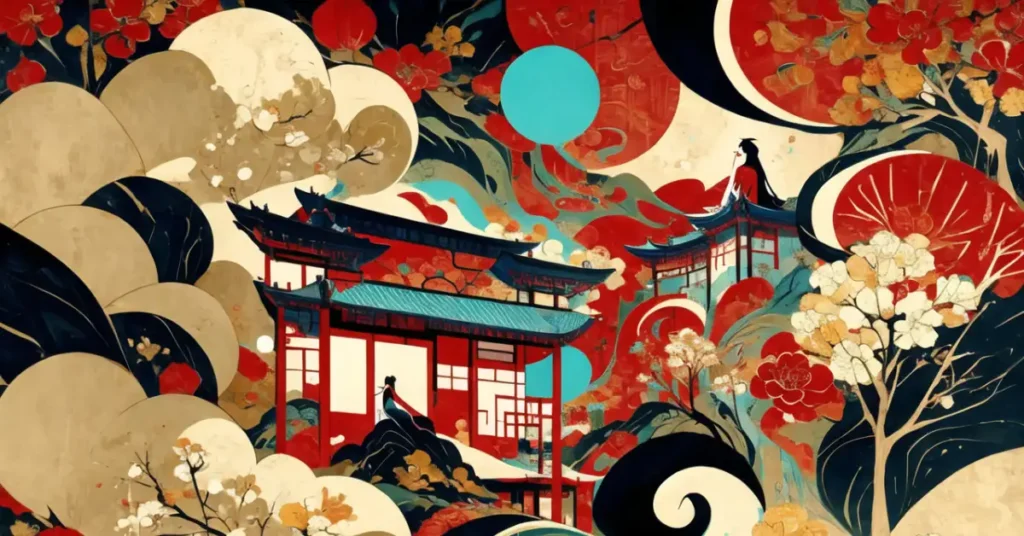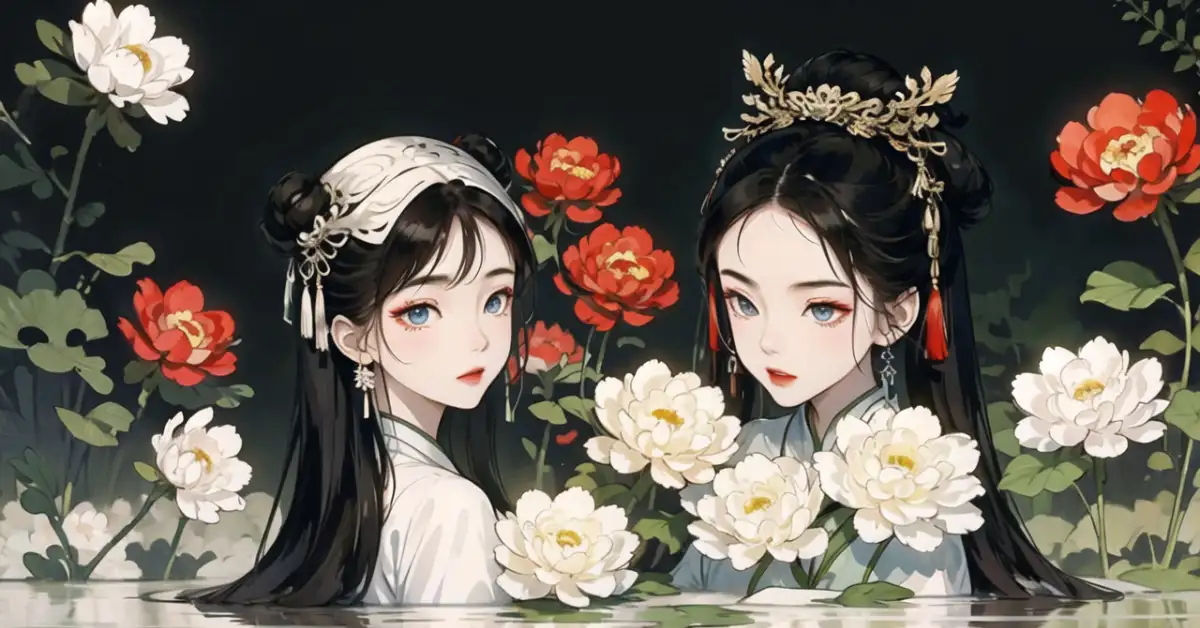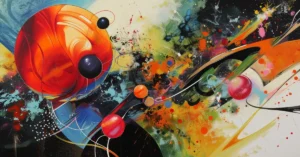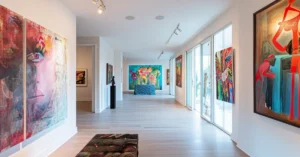Discover the transformative world of contemporary Chinese art, where the fusion of tradition and innovation captures China’s evolving identity and global impact. This article delves into the heart of an art movement that not only reflects the nation’s dynamic changes but also shapes them. Meet the avant-garde artists who challenge creative limits and express the complexities of modern China. Engage with artworks that resonate globally, telling stories that connect us all.
What is Contemporary Chinese Art?
We’ve witnessed the fascinating evolution of contemporary Chinese art, a vibrant and dynamic force reshaping the art world. Born out of a fusion of traditional techniques and modern expressions, this art form speaks to both China’s rich heritage and its place in an interconnected global landscape.
| Period | Characteristics | Key Figure |
|---|---|---|
| Post-1970s | Emergence from Cultural Revolution, exploring personal and socio-political themes | Ai Weiwei |
| 1980s-1990s | Rapid opening to Western ideas, birth of avant-garde movements | Xu Bing |
| 2000s-Present | Global presence with nuanced commentary on globalization, identity, and technology | Cai Guo-Qiang |
In recent decades, artists from China have masterfully blended painting, calligraphy, and new media to question and reshape notions of identity and cultural significance. Creators such as Ai Weiwei have achieved international acclaim, broadening perceptions of Chinese art beyond its historical confines.
Us, the keen enthusiasts, find that the works often reflect poignant social commentary, a testament to the nation’s dramatic transformations. Some artists focus on critiques of globalization, while others celebrate the fusion of past and present. Moving into the latest chapter of its history, contemporary Chinese art breaks boundaries and challenges viewers with its complexity and depth.
Historical Context and Evolution
Contemporary Chinese art has dramatically evolved from its traditional roots, reflecting profound political and social changes.

Origins and Influence
Our journey into contemporary Chinese art finds its roots deeply embedded in a rich tapestry of history and tradition. Predominantly influenced by classical philosophies and techniques, traditional Chinese art was characterized by intricate brushwork and a strong emphasis on symbolism. The fusion of art with Confucian, Taoist and Buddhist principles once dominated the realm, fostering a unique aesthetic that has continued to influence artists to this day.
Cultural Revolution Impact
The Cultural Revolution (1966-1976) marked a turbulent period in China‘s history, with dramatic effects on its art. Mao Zedong‘s political campaign sought to purge capitalist and traditional elements, leading to a nationwide upheaval of the arts. During this time, art became a tool for political propaganda, emphasizing Socialist Realism —a significant divergence from past practices. Many traditional artworks were destroyed, and contemporary artists were compelled to use their art as an instrument for political messages.
Post-Mao Era and Openness
After Mao’s death in 1976, Deng Xiaoping‘s modernization policies catalyzed a new era of “openness.” This period witnessed an artistic renaissance, where Chinese artists began to incorporate Western styles and concepts, marking a radical departure from the restrictive confines of the past. The 1980s brought about a resurgence of individual creativity and a strengthened spirit of experimentation, leading to the vibrant and diverse contemporary art landscape we celebrate today.
Art Forms and Innovations
In the vibrant realm of contemporary Chinese art, we witness a thrilling blend of traditional elements fused with cutting-edge innovation.

Diverse Mediums and Techniques
Contemporary Chinese artists break new ground by employing a vast spectrum of mediums and techniques. From sculpture and painting to more avant-garde video and photography, each form is a testament to the diversity and adaptability of modern artistry.
Notable Mediums:
- Traditional canvas
- Digital installations
- Experimental photography
- Mixed-media sculptures
Contemporary Ink Painting
Ink painting stands as a storied pillar in Chinese artistic tradition, yet it is being redefined by modern talents. Contemporary ink painting infuses age-old practices with a fresh, contemporary perspective, proving that classic techniques still resonate in today’s art world.
Innovations in Ink:
- New subjects and motifs
- Incorporation of modern narratives
- Mixed-media experimentation
Public and Performance Art
Our streets have become galleries, showcasing the dynamic power of public and performance art. Large-scale installations breathe new life into urban spaces, inviting onlookers to interact and engage with the artwork.
- Installations: Transforming public spaces into immersive experiences.
- Performance Art: Blending art with activism and cultural commentary.
Embracing these new directions, contemporary Chinese art remains an exhilarating landscape of constant evolution and creativity.
Key Figures and Artists of Contemporary Chinese Art
We’re diving into the dynamic realm of contemporary Chinese art, a field rich with revolutionary creators and influential visionaries.

Pinterest Portrait of Yue Minjun in his studio in Beijing.
Pioneers of Contemporary Chinese Art
The foundation of contemporary Chinese art was laid by audacious individuals who dared to push the boundaries. The iconic Ai Weiwei stands tall as a defiant sculptor, conceptual artist, and activist. His work has been pivotal in international art circles and has often been a potent commentary on social and political issues. Huang Yong Ping, another trailblazer, injected potent philosophical and political ideas into his sculptures and installations, challenging viewers to reconsider cultural narratives.
Prominent Modern Artists
Today’s scene is a tapestry of creativity stitched by diverse hands. Artists like Zeng Fanzhi, known for his expressive Masks series, depict the complexities of human emotion and the state of contemporary society. Qiu Zhijie, with his calligraphic masterpieces, maps the intersection of history, tradition, and globalization — a true testament to the genre’s evolving nature. Cai Guo-Qiang amazes us with his gunpowder art, staging explosive events that conjure up awe and contemplation of the transitory.
Cultural and Political Dynamics of Contemporary Chinese Art
Contemporary Chinese art is fascinatingly complex, intertwining with the shifting cultural and political landscapes of China.

Censorship and Expression
In our exploration of contemporary Chinese art, censorship stands out as a defining force. Chinese artists often encounter state-imposed boundaries that dictate the permissible of artistic expression. Political themes are especially sensitive and works dealing with politically charged subjects must navigate these restrictions carefully. This environment has given birth to movements like political pop and cynical realism, where artists subtly critique social and political issues through their work. The Xiamen Dada movement, for example, was known for its radical departure from accepted norms, testing the limits of expression.
- Political Pop: Artistic vehicles for indirect political commentary.
- Cynical Realism: Reflects artists’ disillusionment with contemporary societal issues.
- Xiamen Dada: An avant-garde group that addressed the absurdity of social and political norms through performance art and installations.
International Recognition and Critique
Our journey into contemporary Chinese art shines a light on its international presence. Recognition abroad has been significant, as the art transcends borders through exhibitions and critiques. Movements like socialist realism, once praised for upholding the state’s ideologies, are now part of an extensive dialogue that critiques the intersection of art and politics. As Jing artists – part of a new generation – gain prominence, they often face opposing reactions: celebrated for their innovative approaches internationally while facing scrutiny at home.
- Socialist Realism: Once a celebrated ideal, now critically examined in international contexts.
- Jing Artists: A new wave making waves through global art scenes.
Contemporary Chinese art remains a vigorous field, with artists persistently pushing the boundaries of expression. Through both the lens of censorship and global recognition, we witness a dynamic narrative that continues to evolve and captivate the world.
Global Presence and Market
Contemporary Chinese art has truly taken its place on the international stage, partaking in a dance of cultural exchange across galleries, auctions, and exhibitions around the world—we’re witnessing history in the making!

Exhibitions and Biennales
We can’t talk about the global influence without admiring our artists showcased at the prestigious Venice Biennale. It’s a melting pot where Eastern creativity meets the West, exposing the world to the diversity and complexity of our collective spirit. Exciting, isn’t it? From Beijing to Paris, Chinese artworks are commanding attention and respect, signifying a shifting dynamic in the art world. You’ll find monumental works highlighting the nuances of contemporary life and thought-provoking installations pushing boundaries at every corner.
Art Market and Collectors
Now, let’s get to the exciting world of commerce where contemporary Chinese art has become a significant player. Here’s the thrilling part: Hong Kong and Shanghai emerge as powerhouses hosting pulsating auctions that see a blend of traditional and contemporary works. New collectors and aficionados from around the globe are setting their sights on our emerging artists, and the acceleration is tangible.
- Art Market Growth: Generating a staggering $7.4 billion in 2021, the art market is experiencing an upswing.
- Top Cities for Collectors: Beijing, Hong Kong, Shanghai, and Paris are hotspots for collectors vying for the latest piece to add to their troves.
- International Galleries: Internationally acclaimed galleries are increasingly spotlighting contemporary Chinese artworks.
This commodification can often be a double-edged sword, but it ultimately spells out a growing appetite and appreciation for our cultural expressions on a global scale.
My Perspective on Future Trends and Challenges
Contemporary Chinese art is poised on the cusp of innovation and individuality, with emerging artists pushing the boundaries of traditional forms.

Technological Impact and New Media
In the realm of technology, we are witnessing an unprecedented embrace of new media in contemporary Chinese art. The future will likely hold more interactive and immersive experiences, with artists employing advanced software and digital mediums to express abstract concepts and nuanced cultural narratives. This shift reflects not just the aging of traditional art forms but the birth of new ones that allow for even greater self-expression and individuality.
| Prospects | Scope | Challenges |
|---|---|---|
| Enhanced Interactivity | Art Riding Technology’s Wave: Potential for profound audience engagement and dynamic expression. | Preservation Dilemma: Ensuring digital art withstands the test of time. |
| Expanded Boundaries | New Horizons in Abstraction: Leveraging AR and VR for Storytelling. | Accessibility: Keeping pace with rapid tech advancements for mass adoption. |
Sustainability of the Avant-Garde
The avant-garde in contemporary Chinese art is continually evolving, but how can we sustain this innovative spirit? Emerging artists are vital to this ecosystem, constantly coloring outside the lines of established practices and injecting fresh perspectives into the scene. With a keen focus on environmental and cultural sustainability, their work often reflects our collective and ongoing concerns such as the urgent need for eco-conscious materials and processes.
| Concerns | Methods | Impediments |
|---|---|---|
| Environmental Accountability | Green Art Practices: Use of recycled materials and eco-friendly art. | Cost Constraints: Balancing green initiatives with financial viability. |
| Cultural Continuity | Preserving Avant-Garde’s Essence: Encouraging individuality while honoring traditional roots. | Representation: Ensuring diversity in the global art narrative. |
The vibrant tableau of contemporary Chinese art is set for fascinating developments as technology and a commitment to avant-garde principles lead us into uncharted territories. It’s a thrilling time for both creators and enthusiasts as we explore these new dimensions together.
FAQ – Contemporary Chinese Art
What is a contemporary Chinese art?
Contemporary Chinese art is a dynamic blend of traditional aesthetics and modern issues, reflecting China’s cultural shifts and global interactions.
When did Chinese contemporary art start?
Chinese contemporary art started around the end of the Cultural Revolution, with significant growth during the late 1970s as China opened up to the world.
What are the characteristics of modern Chinese art?
Modern Chinese art often features a mix of traditional techniques with innovative approaches, embracing themes like social, cultural, and political commentary. It can exhibit exaggerated stylization, decorative qualities, and sometimes hyper-realistic imagery.
What type of art is popular in China?
In China, traditional forms like ink painting and calligraphy remain popular, while contemporary art has gained significant traction, reflecting both historical influences and modern-day experiences.
Enjoyed our blog post on “Contemporary Chinese Art“? We’d love to hear your thoughts! Drop a comment below to share your experience with us.
If you want to keep reading more from us, have a look at these articles.







